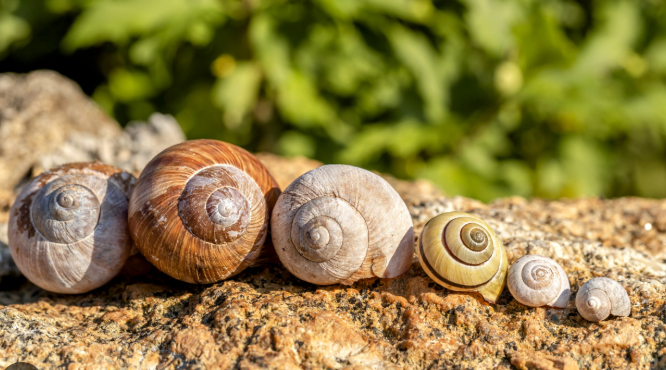
Learning outcomes
Mollusca is one of the largest and most diverse phyla, its members ranging in size
from very small organisms to the largest of invertebrates. Their basic body divisions
are head, foot, and visceral mass, which is usually covered by a shell. The majority are
marine, but some are freshwater, and a few are terrestrial. They occupy a wide variety
of niches. A number are economically important, and a few are medically important as hosts of parasites.
t the end of the course, the student has in-depth knowledge of morphology, ecology, taxonomy, evolution and phylogeny of Phylum Mollusca,
Course contents
Generalities on the Phylum Mollusca
Structure, morphology characteristics of the shell of the molluscs in the different classes.
Class Monoplacophora: Generalities and systematic.
Class Polyplacophora: Generalities and systematic.
Class Bivalvia: Generalities and systematic.
Main orders of Bivalvia and analysis of the most important families.
Class Gastropoda: Generalities and systematic.
Main orders of Gastropoda and analysis of the most important families.
Class Scaphopoda: Generalities and systematic.
Class Cephalopoda: Generalities and systematic
Main orders of Cephalopoda and analysis of the most important families.
Emphasis is given to
1. the study of schistosomiasis vector mollusks and other helminths of medical-veterinary interest,
2. Mollusks as source of food,
3. The economic importance of oyster
4. The use of mollusks in cosmetics
Mollusca is one of the largest and most diverse phyla, its members ranging in size
from very small organisms to the largest of invertebrates. Their basic body divisions
are head, foot, and visceral mass, which is usually covered by a shell. The majority are
marine, but some are freshwater, and a few are terrestrial. They occupy a wide variety
of niches. A number are economically important, and a few are medically important as hosts of parasites.
t the end of the course, the student has in-depth knowledge of morphology, ecology, taxonomy, evolution and phylogeny of Phylum Mollusca,
Course contents
Generalities on the Phylum Mollusca
Structure, morphology characteristics of the shell of the molluscs in the different classes.
Class Monoplacophora: Generalities and systematic.
Class Polyplacophora: Generalities and systematic.
Class Bivalvia: Generalities and systematic.
Main orders of Bivalvia and analysis of the most important families.
Class Gastropoda: Generalities and systematic.
Main orders of Gastropoda and analysis of the most important families.
Class Scaphopoda: Generalities and systematic.
Class Cephalopoda: Generalities and systematic
Main orders of Cephalopoda and analysis of the most important families.
Emphasis is given to
1. the study of schistosomiasis vector mollusks and other helminths of medical-veterinary interest,
2. Mollusks as source of food,
3. The economic importance of oyster
4. The use of mollusks in cosmetics
- Teacher: Omran Fadl
- Teacher: عمران فضل عثمان فضل Science